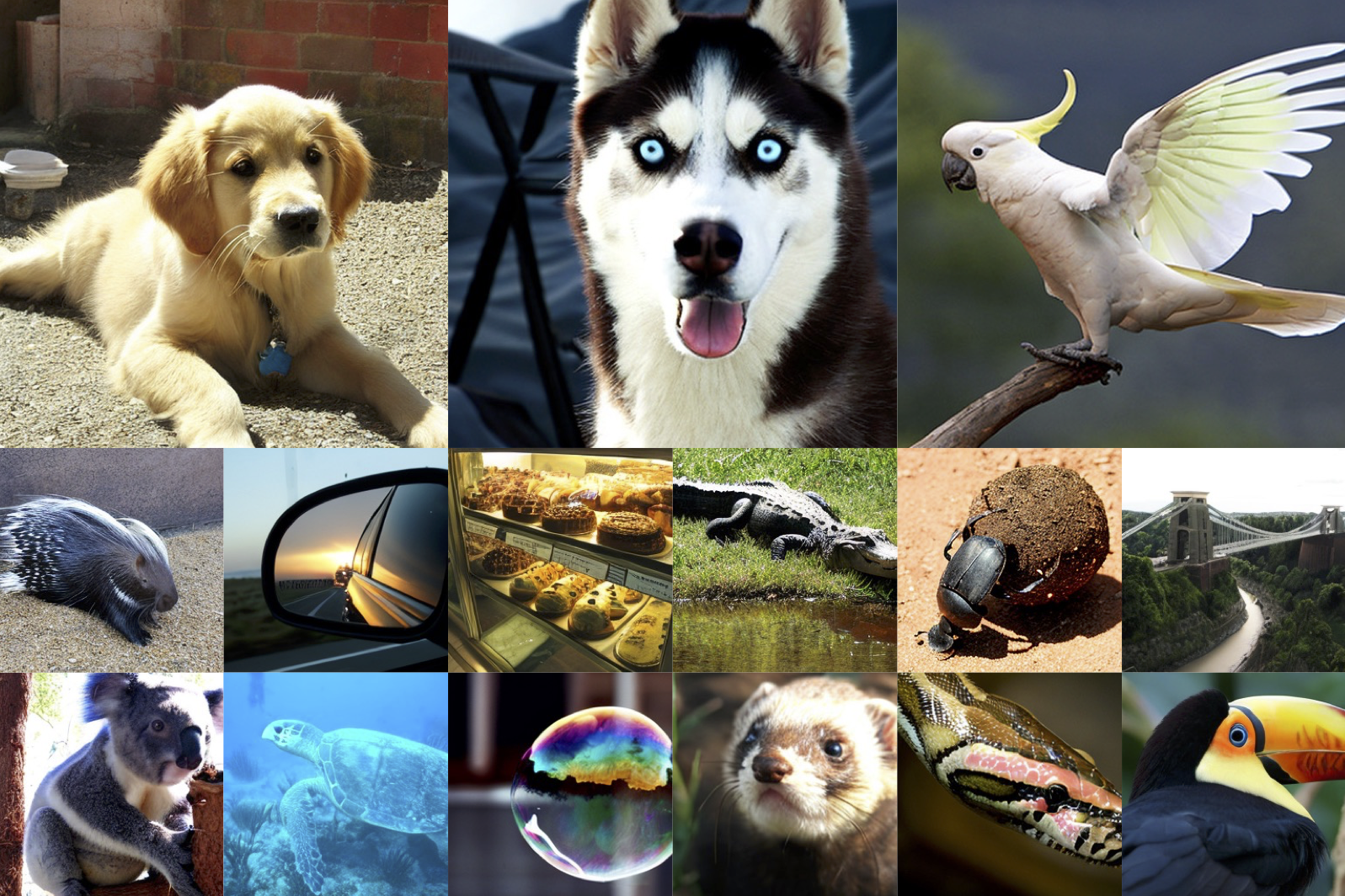Paper | Project Page | Run DiT-XL/2 


This repo contains PyTorch model definitions, pre-trained weights and training/sampling code for our paper exploring diffusion models with transformers (DiTs). You can find more visualizations on our project page.
Scalable Diffusion Models with Transformers
William Peebles, Saining Xie
UC Berkeley, New York University
We train latent diffusion models, replacing the commonly-used U-Net backbone with a transformer that operates on latent patches. We analyze the scalability of our Diffusion Transformers (DiTs) through the lens of forward pass complexity as measured by Gflops. We find that DiTs with higher Gflops---through increased transformer depth/width or increased number of input tokens---consistently have lower FID. In addition to good scalability properties, our DiT-XL/2 models outperform all prior diffusion models on the class-conditional ImageNet 512×512 and 256×256 benchmarks, achieving a state-of-the-art FID of 2.27 on the latter.
This repository contains:
- 🪐 A simple PyTorch implementation of DiT
- ⚡️ Pre-trained class-conditional DiT models trained on ImageNet (512x512 and 256x256)
- 💥 A self-contained Hugging Face Space and Colab notebook for running pre-trained DiT-XL/2 models
- 🛸 A DiT training script using PyTorch DDP
An implementation of DiT directly in Hugging Face diffusers can also be found here.
First, download and set up the repo:
git clone https://github.com/facebookresearch/DiT.git
cd DiTWe provide an environment.yml file that can be used to create a Conda environment. If you only want
to run pre-trained models locally on CPU, you can remove the cudatoolkit and pytorch-cuda requirements from the file.
conda env create -f environment.yml
conda activate DiTPre-trained DiT checkpoints. You can sample from our pre-trained DiT models with sample.py. Weights for our pre-trained DiT model will be
automatically downloaded depending on the model you use. The script has various arguments to switch between the 256x256
and 512x512 models, adjust sampling steps, change the classifier-free guidance scale, etc. For example, to sample from
our 512x512 DiT-XL/2 model, you can use:
python sample.py --image-size 512 --seed 1For convenience, our pre-trained DiT models can be downloaded directly here as well:
| DiT Model | Image Resolution | FID-50K | Inception Score | Gflops |
|---|---|---|---|---|
| XL/2 | 256x256 | 2.27 | 278.24 | 119 |
| XL/2 | 512x512 | 3.04 | 240.82 | 525 |
Custom DiT checkpoints. If you've trained a new DiT model with train.py (see below), you can add the --ckpt
argument to use your own checkpoint instead. For example, to sample from the EMA weights of a custom
256x256 DiT-L/4 model, run:
python sample.py --model DiT-L/4 --image-size 256 --ckpt /path/to/model.ptWe provide a training script for DiT in train.py. This script can be used to train class-conditional
DiT models, but it can be easily modified to support other types of conditioning. To launch DiT-XL/2 (256x256) training with N GPUs on
one node:
torchrun --nnodes=1 --nproc_per_node=N train.py --model DiT-XL/2 --data-path /path/to/imagenet/trainNote
This script is a PyTorch reimplementation of DiT training. It has been only partially tested. We have trained DiT-XL/2 (256x256) from scratch for 90K iterations; the loss curve closely matches the JAX implementation's and FID is very similar at 50K iterations. If you encounter any bugs, please open an issue!
Training could likely be sped-up significantly by:
- using Flash Attention in the DiT model
- using
torch.compilein PyTorch 2.0
Basic features that would be nice to add:
- Monitor FID and other metrics
- Generate and save samples from the EMA model periodically
- Resume training from a checkpoint
- AMP/bfloat16 support
Our models were originally trained in JAX on TPUs. The weights in this repo are ported directly from the JAX models. There may be minor differences in results stemming from sampling with different floating point precisions. We re-evaluated our ported PyTorch weights at FP32, and they actually perform marginally better than sampling in JAX (2.21 FID versus 2.27 in the paper).
@article{Peebles2022DiT,
title={Scalable Diffusion Models with Transformers},
author={William Peebles and Saining Xie},
year={2022},
journal={arXiv preprint arXiv:2212.09748},
}We thank Kaiming He, Ronghang Hu, Alexander Berg, Shoubhik Debnath, Tim Brooks, Ilija Radosavovic and Tete Xiao for helpful discussions. William Peebles is supported by the NSF Graduate Research Fellowship.
This codebase borrows from OpenAI's diffusion repos, most notably ADM.
The code and model weights are licensed under CC-BY-NC. See LICENSE.txt for details.


